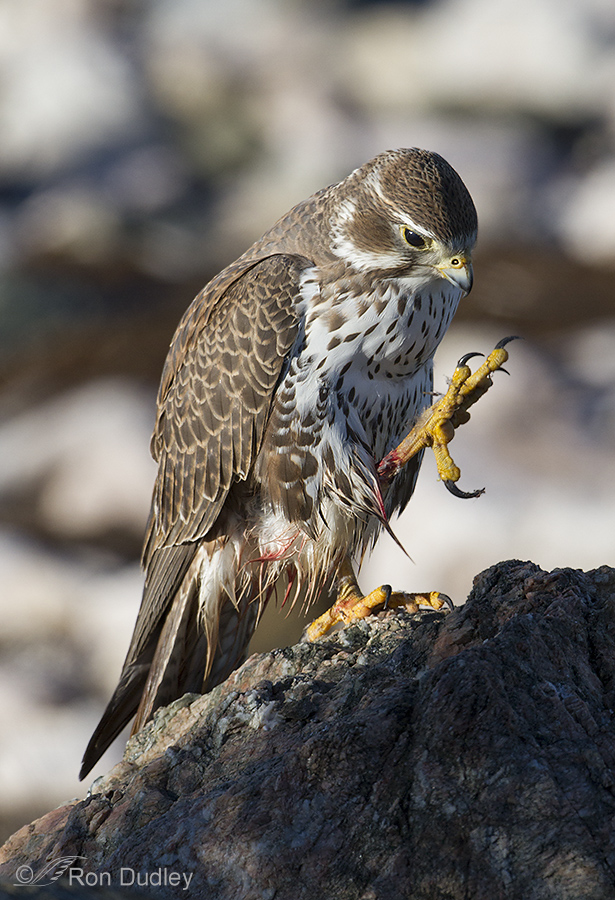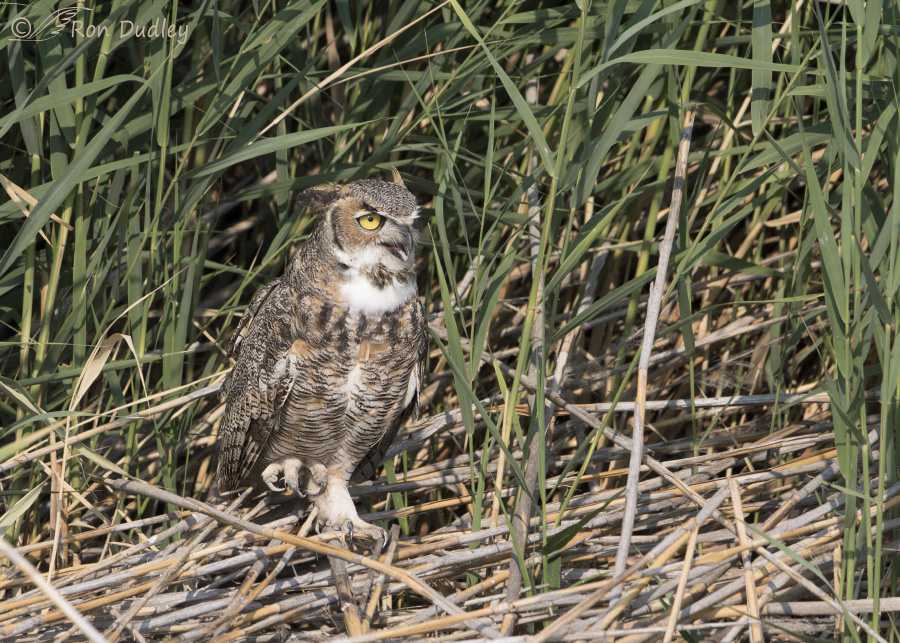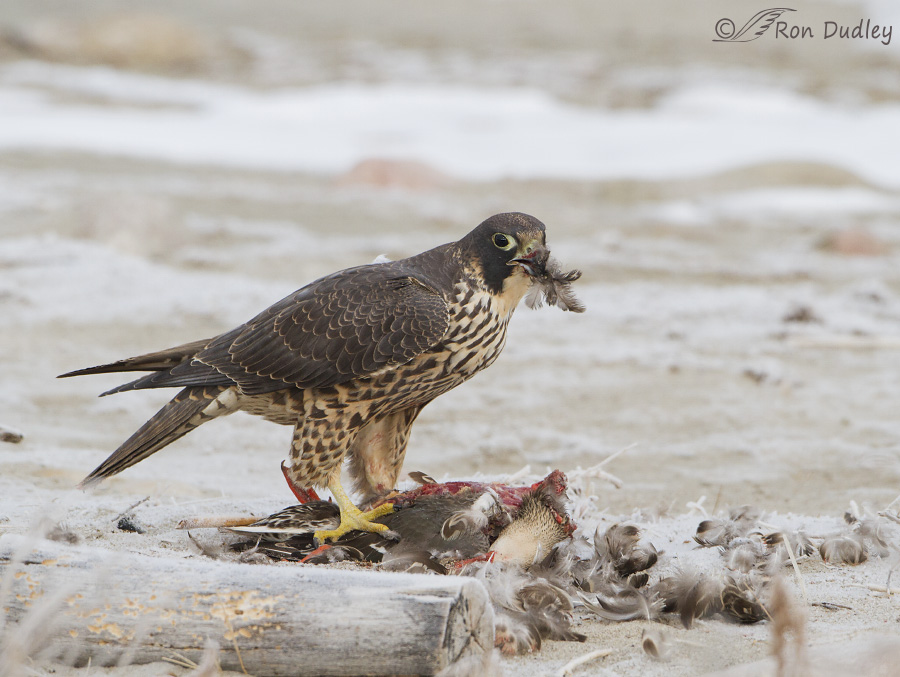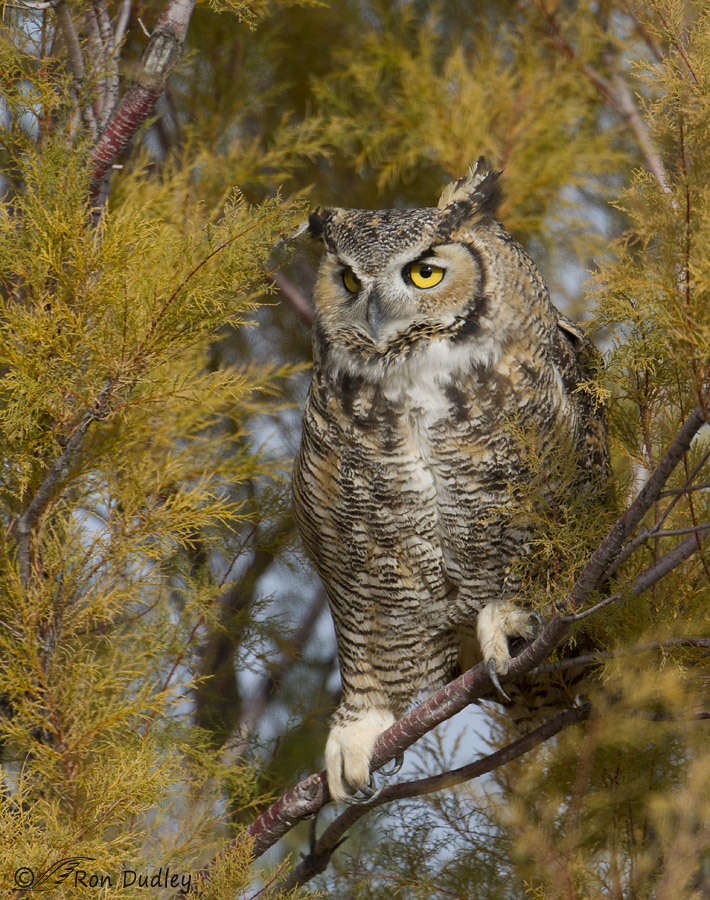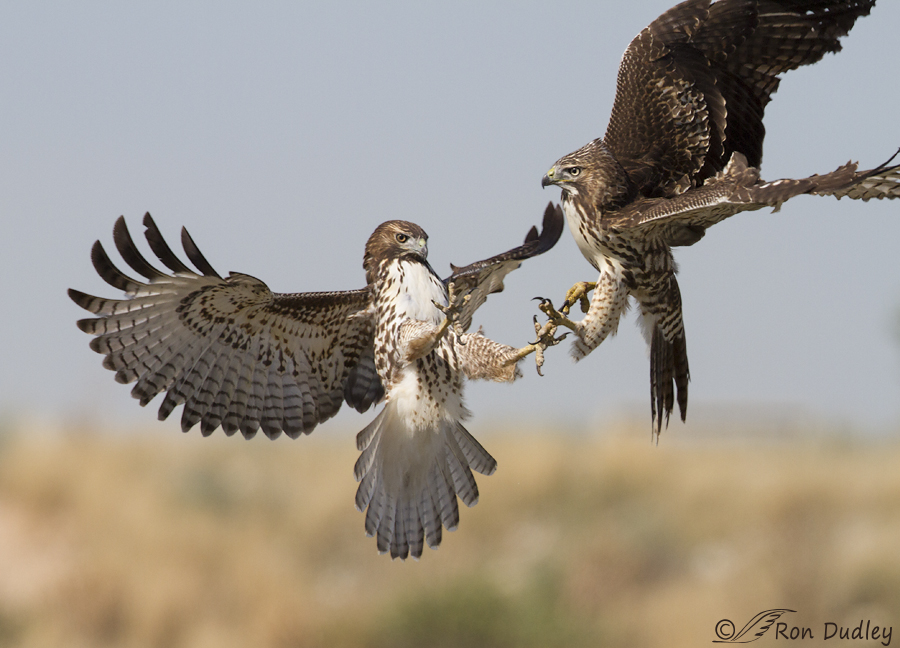Tag: talons
Great Horned Owl – A Bird I Gambled On And Lost
Peregrine Falcon On A Duck Kill
Great Horned Owls In Tamarisk
Fighting Red-tailed Hawks
The Menacing Talons Of A Prairie Falcon
Barn Owl Hunting Adaptations And Techniques
One more Barn Owl post and then I’ll give them a rest for a while. Lately I’ve spent a lot of time watching these birds hunt and I’ve become intrigued by the process and their adaptations for doing so. Hunting over deep snow presents unique challenges because their prey (typically voles) spends most of their time in tunnels under the surface, so the owls are often hunting by sound alone. According to Birds of North America Online (out of Cornell) Barn Owls hunt prey by sound more effectively than any other animal ever tested (I’m unsure if this statement takes into account the use of sonar by cetaceans and ultrasonic sounds by bats but BNA seldom gets things like this wrong). 1/3200, f/7.1, ISO 500, 500 f/4, 1.4 tc, natural light, not baited, set up or called in They fly low and slow over the surface while watching and listening but with this much snow they usually locate the voles only by sound. Notice that they can tuck their legs up into their ventral feathers so far that only the feet are visible. It’s amazing that they can do so because… 1/3200, f/7.1, ISO 500, 500 f/4, 1.4 tc, natural light, not baited, set up or called in as you can see in this “butt shot” those legs are incredibly long. This is an adaptation for grasping prey through deep vegetation or snow. Their claws (nails) are unusually long and sharp and the middle nail has a pectinate inner edge, most likely an adaptation for grasping prey…
Northern Harriers Battle over a Mallard
Occasionally we have brutally cold winters here in northern Utah. It’s my opinion that unusually cold temperatures when combined with thick crusted snow gives harriers little access to their staple food around here – voles. Survival then becomes tenuous for the harriers and they’re forced to move on to other food sources like small birds, dead carp and waterfowl. When a large meal like a carp or duck is available many harriers often fight over the food item and they do so with ferocity. During less stressful times of the year I often see these birds skirmish but then it almost seems like a playful interlude that they do simply for “fun”. Not so when it’s very cold and food is scarce – then it’s deadly serious and incredibly interesting to observe and photograph. First, a disclaimer. Some of the photos I’ll present here would wither under the scrutiny of critique because of cut off or clipped wings, missing eyes or heads, lack of catch lights and difficult and rapidly changing lighting conditions. My intent here is to show the behavior with the best images I have but some of them do have obvious flaws. The calm before the storm I didn’t see harriers make this Mallard kill but it was still fresh when I came across this bird on the duck. At first I though I’d simply be photographing the harrier calmly enjoying its meal but I was very mistaken. Thinking about challenging the larger bird for the meal It didn’t take long for other birds to challenge her for the Mallard. Some were timid…
Great Horned Owl – A Bird I Gambled On And Lost
Peregrine Falcon On A Duck Kill
Great Horned Owls In Tamarisk
Fighting Red-tailed Hawks
The Menacing Talons Of A Prairie Falcon
Barn Owl Hunting Adaptations And Techniques
One more Barn Owl post and then I’ll give them a rest for a while. Lately I’ve spent a lot of time watching these birds hunt and I’ve become intrigued by the process and their adaptations for doing so. Hunting over deep snow presents unique challenges because their prey (typically voles) spends most of their time in tunnels under the surface, so the owls are often hunting by sound alone. According to Birds of North America Online (out of Cornell) Barn Owls hunt prey by sound more effectively than any other animal ever tested (I’m unsure if this statement takes into account the use of sonar by cetaceans and ultrasonic sounds by bats but BNA seldom gets things like this wrong). 1/3200, f/7.1, ISO 500, 500 f/4, 1.4 tc, natural light, not baited, set up or called in They fly low and slow over the surface while watching and listening but with this much snow they usually locate the voles only by sound. Notice that they can tuck their legs up into their ventral feathers so far that only the feet are visible. It’s amazing that they can do so because… 1/3200, f/7.1, ISO 500, 500 f/4, 1.4 tc, natural light, not baited, set up or called in as you can see in this “butt shot” those legs are incredibly long. This is an adaptation for grasping prey through deep vegetation or snow. Their claws (nails) are unusually long and sharp and the middle nail has a pectinate inner edge, most likely an adaptation for grasping prey…
Northern Harriers Battle over a Mallard
Occasionally we have brutally cold winters here in northern Utah. It’s my opinion that unusually cold temperatures when combined with thick crusted snow gives harriers little access to their staple food around here – voles. Survival then becomes tenuous for the harriers and they’re forced to move on to other food sources like small birds, dead carp and waterfowl. When a large meal like a carp or duck is available many harriers often fight over the food item and they do so with ferocity. During less stressful times of the year I often see these birds skirmish but then it almost seems like a playful interlude that they do simply for “fun”. Not so when it’s very cold and food is scarce – then it’s deadly serious and incredibly interesting to observe and photograph. First, a disclaimer. Some of the photos I’ll present here would wither under the scrutiny of critique because of cut off or clipped wings, missing eyes or heads, lack of catch lights and difficult and rapidly changing lighting conditions. My intent here is to show the behavior with the best images I have but some of them do have obvious flaws. The calm before the storm I didn’t see harriers make this Mallard kill but it was still fresh when I came across this bird on the duck. At first I though I’d simply be photographing the harrier calmly enjoying its meal but I was very mistaken. Thinking about challenging the larger bird for the meal It didn’t take long for other birds to challenge her for the Mallard. Some were timid…


